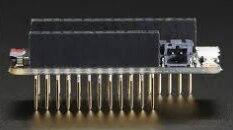Hi everyone,
First, this is my first post in element14 so I don't know if there is a better subforum for my question - if there is, then mods please move it there.
I'm trying to find some pin converters, by which I mean something which will change a male pin into a female socket. This is primarily for stacking shield boards on top of a microcontroller board when I've got the wrong sense pins soldered in and don't want to change them. For example, I have two boards which I want to stack, both have male pins, so how do I connect them? I've looked around a lot of sites trying to find these but haven't succeeded yet and when I was thinking of where I could ask element14 seemed like the logical choice.
Helpful suggestions much appreciated.















